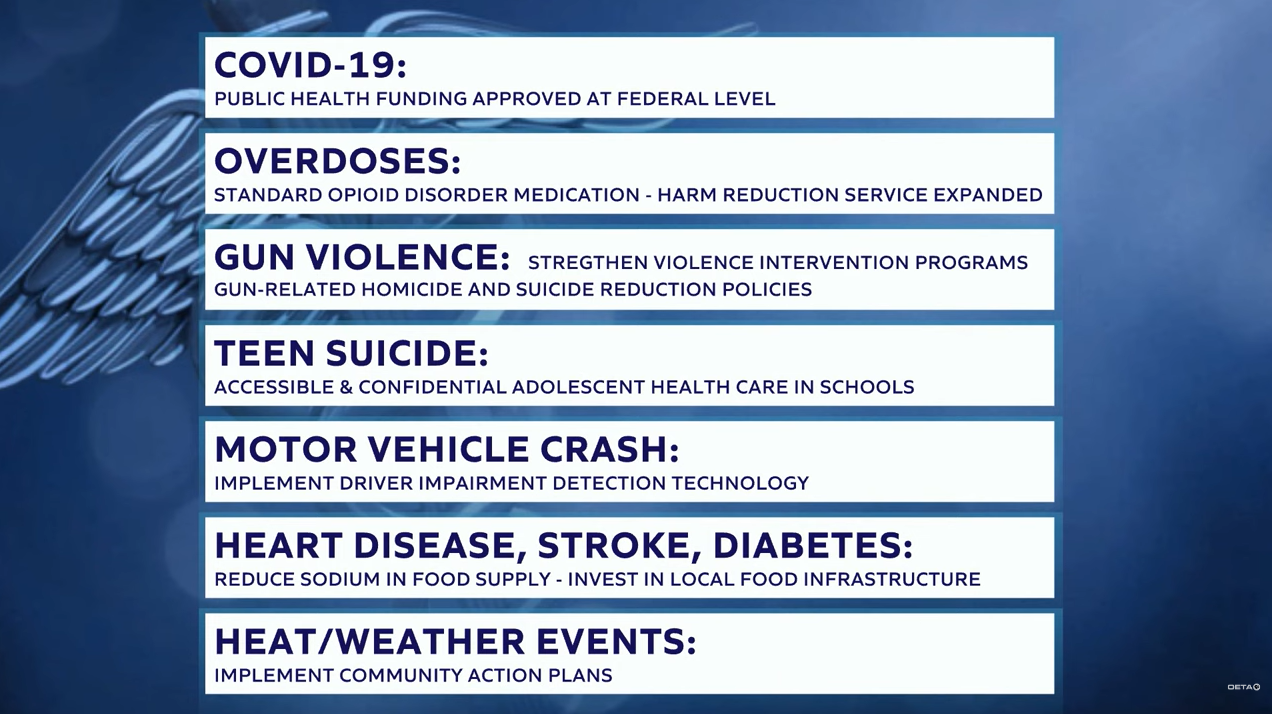A nationwide report on life expectancy was released this week, and the news is not good. On average, Americans have lost nearly three years of life since the number peaked at almost 79 years of age back in 2014, and the decrease in Oklahoma is even more pronounced. What's to blame and how can we possibly get some of those years back in the future?
That report by the Bloomberg American Health Initiative and John Hopkins University provides 10 strategies to improve life expectancy. The initiatives are all based on preventative measures for the six leading causes of death nationwide.
When the Covid pandemic hit in 2019, the decline in national life expectancy rate accelerated at a rate that is compared to declines recorded during World War I and the great influenza of 1918.
“Back in 2016, we recognized that life expectancy was on a decline. We know that there were gains that were made. In the last several years, however, the recent covid and infection rates and several other factors have contributed to the continual decline, or the recent declines, that we've seen in life expectancy.” says Michelle Spencer, Associate Director at the Bloomberg American Health Initiative.
The national rate is 76.1. Here in Oklahoma, it's much less than that.
Derek Pate, Health Statistics Director at the Oklahoma Department of Health says, “Preliminary estimates for the period life expectancy for Oklahomans as of right now is 72.8 years at birth. That’s 3.3 years lower than what the national rate is currently calculated at, given that it is still provisional estimates. That gap is a little bit larger now than what it was in 2019. In 2019, the gap was about 2.7.”
Life expectancy rates can be calculated in multiple ways.
Pate continues, “You want us to take a cohort or a set of individuals that are born and tracked them over their entire lifetime. The way that the National Center for Health Statistics and the life expectancy that was evaluated in the Johns Hopkins report is done with a period life expectancy.”
Spencer, with the Bloomberg American Health Initiative says, “We look at population health. We look at the markers where specific communities are in terms of race and ethnicity, and then we measure those based on how those populations are joining communities across the country. Life expectancy by race shows Asian Americans have the longest life expectancy rate at 83.52 years, less than it was in 2019.”
While American Indians and Alaskan natives have the lowest life expectancy rate at 65.2, that number has fallen more than six years since 2019. Spencer continues, “How does equity play a role in this. How does race, ethnicity, gender, and geographic location play a role in thinking about equitable solutions to the way we approach health and the way we're thinking about increasing life expectancy in this country?”
The 10 initiatives to stop the decline of life expectancy are preventative measures researchers believe would limit premature deaths caused by Covid-19, overdose gun violence, teen suicide, motor vehicle crashes, heart disease, stroke, diabetes, and weather events. Initiatives include changing state or federal policies, increasing funding for local health, food, or intervention programs, introducing healthcare programs into schools and community tailored programs for healthy living.






